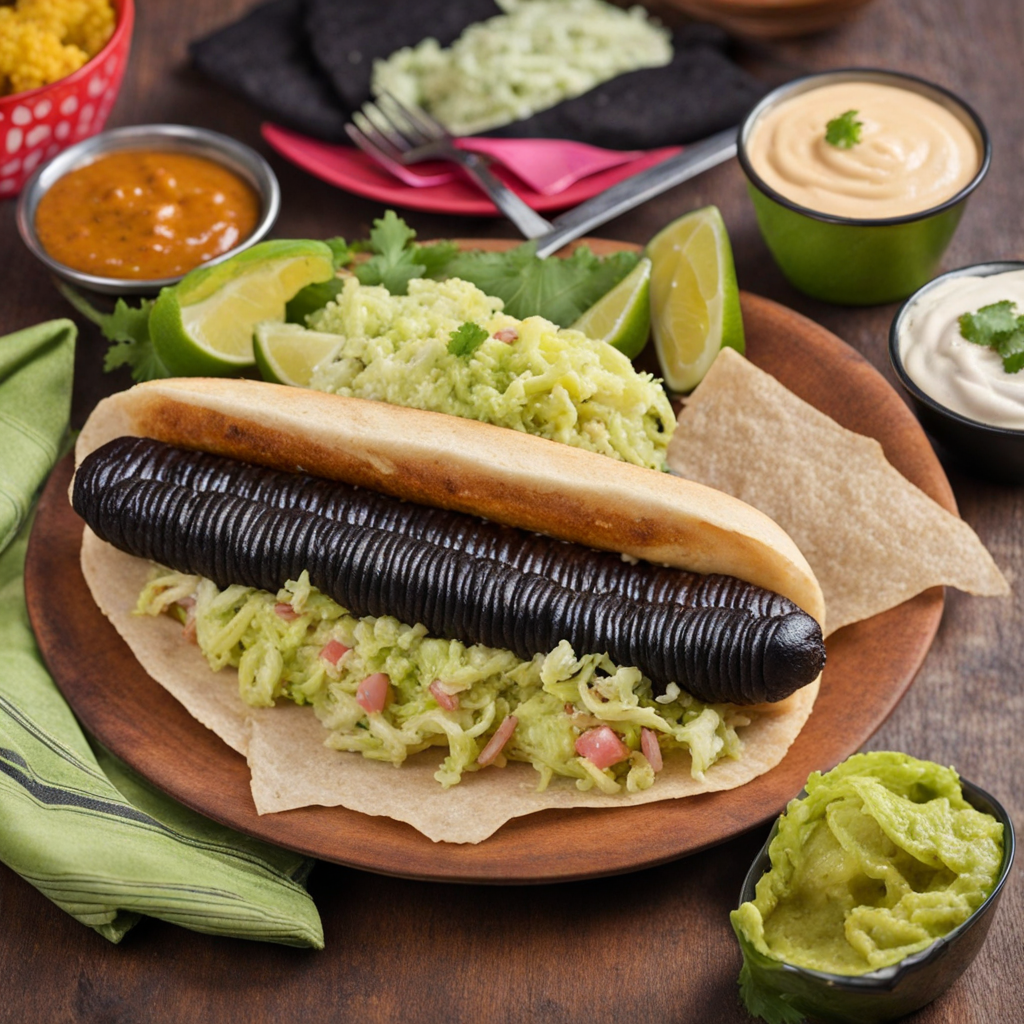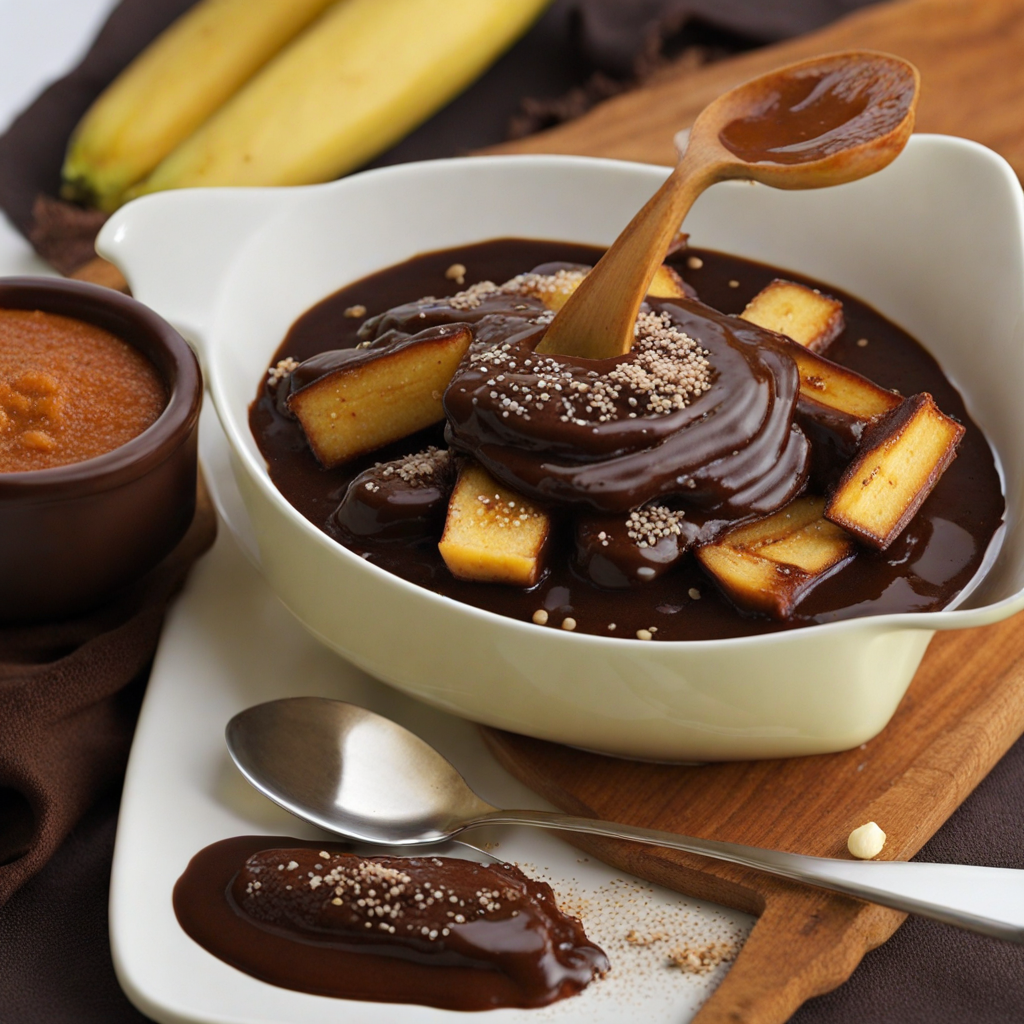Shuco
Shuco is a delicious and hearty Guatemalan street food that showcases the vibrant flavors and culinary traditions of the region. This dish typically consists of a grilled corn tortilla that is filled with a variety of ingredients, making it a versatile option for both meat lovers and vegetarians alike. The most common fillings include a combination of marinated grilled meats, such as pork or chicken, along with a medley of fresh vegetables like cabbage, tomatoes, and onions. The tortilla is often slathered with a rich and spicy tomato sauce, known as "recado," which adds depth and complexity to each bite. Beyond the traditional meat fillings, Shuco can also feature beans, avocado, and cheese, allowing for a customization that caters to different palates. The dish is typically served with a side of spicy salsa, which can range from mildly tangy to fiery hot, depending on personal preference. The balance of textures in Shuco is remarkable, with the crispiness of the grilled tortilla contrasting beautifully with the tender fillings, creating a satisfying experience that indulges all senses. The experience of enjoying Shuco goes beyond just the taste; it is steeped in local culture and community. Often found in bustling street markets, vendors skillfully prepare these delectable treats in front of eager customers, creating an inviting atmosphere filled with the aroma of grilled meats and spices. Savoring a Shuco not only offers a delightful culinary adventure but also provides a glimpse into the rich heritage of Guatemalan cuisine, making it a must-try for anyone looking to explore new flavors.
How It Became This Dish
Shuco: A Culinary Journey Through Guatemala Origins of Shuco Shuco, a beloved street food from Guatemala, represents more than just a meal; it embodies the rich culinary heritage of the country. The dish is essentially a type of hot dog, but it is distinctly Guatemalan in its preparation and flavor profiles. The term "shuco" is derived from the word "sucio," meaning "dirty" in Spanish. This nickname likely originated from the dish's messy, yet delicious, nature, which combines various toppings and condiments that can drip and spill as one indulges in this savory treat. The origins of Shuco can be traced back to the 20th century in the city of Guatemala. While sausage-like foods have been enjoyed globally for centuries, the Guatemalan interpretation began to take shape in the post-colonial period, influenced by indigenous ingredients and Spanish culinary practices. The introduction of sausages by European settlers combined with local flavors such as black beans, chiles, and fresh vegetables creates a unique fusion that is characteristic of Guatemalan cuisine. Cultural Significance Shuco is more than just fast food; it is a symbol of community, festivity, and local culture. Street vendors, known as "shuqueros," often serve Shucos at bustling markets, fairs, and street corners, making it a popular choice for both locals and visitors. The presence of these vendors not only provides economic opportunities but also fosters social interactions, as people gather around to enjoy a delicious meal. In Guatemalan society, food carries deep cultural significance, often serving as a means of connection and celebration. Shucos are commonly enjoyed during festive occasions and community events, where families and friends come together to savor the flavors of their homeland. They embody the spirit of street food culture, where meals are accessible, affordable, and deeply rooted in local traditions. The Making of Shuco At its core, a Shuco features a grilled sausage, typically made from pork or beef, nestled in a fresh bolillo (a type of bread roll). However, what truly sets it apart are the toppings and sauces that give it its distinct flavor. The traditional Shuco is adorned with a variety of ingredients, including: - Cabbage Slaw: A tangy and crunchy slaw made from finely shredded cabbage, often mixed with carrots, which adds freshness and texture. - Guacamole: Creamy and rich, guacamole made from ripe avocados brings a smoothness that balances the dish. - Tomato Sauce: A homemade tomato sauce, typically seasoned with spices, adds a layer of depth and moisture. - Green Sauce: Often made with tomatillos or green tomatoes, this sauce introduces a zesty, slightly spicy element. - Radishes and Onions: Freshly sliced radishes and onions offer a crunch that complements the other ingredients. - Cheese: A sprinkle of crumbled cheese, such as queso fresco, adds a savory finish. The assembly of a Shuco is a creative process, with many vendors putting their unique spin on the dish. Some may offer additional toppings like jalapeños, pickled vegetables, or even fried plantains. This adaptability allows Shucos to cater to diverse tastes, making them a favorite among all age groups. Development Over Time As Guatemala has modernized and globalization has influenced food trends, Shucos have also evolved. While traditional recipes remain popular, contemporary variations have emerged, reflecting the fusion of global culinary influences and local traditions. In urban areas, you may find gourmet interpretations of Shucos, featuring artisanal sausages, house-made sauces, and gourmet toppings. Additionally, the rise of food trucks and pop-up eateries in cities like Antigua and Guatemala City has introduced Shucos to a wider audience. This has led to innovative twists on the classic dish, incorporating international flavors or vegan options to appeal to changing palates. Social media has played a significant role in promoting Shucos, with food enthusiasts sharing their experiences and recommendations online. This visibility has not only helped popularize the dish outside Guatemala but has also encouraged locals to experiment with new ingredients and preparation methods. Shuco in Modern Guatemala Today, Shucos are celebrated as a quintessential part of Guatemalan street food culture. They are often featured in food festivals, and competitions, and even in culinary tourism, where visitors seek authentic Guatemalan experiences. The dish's accessibility makes it a staple for all demographics—from students looking for a quick bite to families indulging in a special treat. Moreover, the growing interest in gastronomy has spurred a resurgence of traditional recipes and cooking techniques, prompting a new generation to take pride in their culinary heritage. Food preservation movements and local farmers' markets have also emphasized the importance of using locally sourced ingredients, which enhances the flavors of Shucos and supports the local economy. Conclusion Shuco stands as a delicious testament to Guatemala's vibrant culture and history. Its evolution from a simple street food to a beloved national dish reflects the resilience and creativity of Guatemalans. As it continues to adapt and thrive, Shucos not only satisfy hunger but also foster connections among people, bridging generations and communities through shared culinary experiences. In a world where food trends come and go, Shucos remain a beloved constant—a messy, flavorful, and utterly satisfying representation of Guatemalan identity. Whether enjoyed from a humble street cart or a trendy food truck, Shucos invite everyone to partake in a taste of Guatemala's culinary legacy, anchoring the past while embracing the future.
You may like
Discover local flavors from Guatemala







